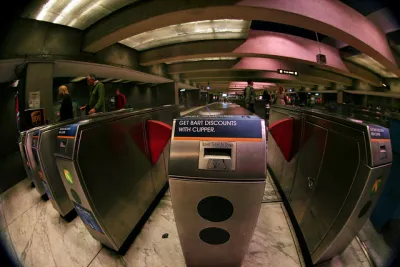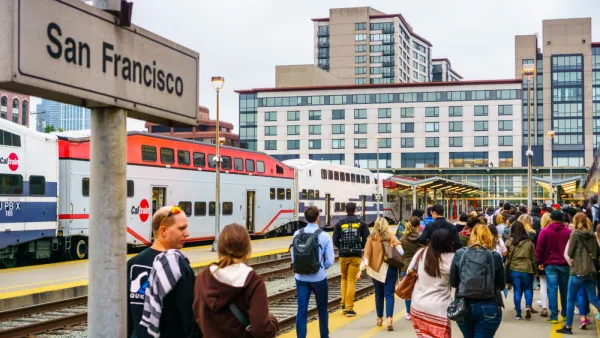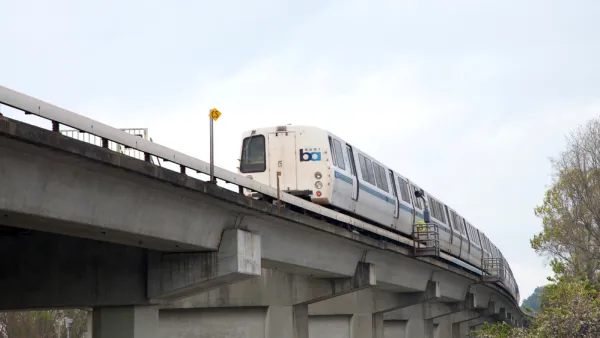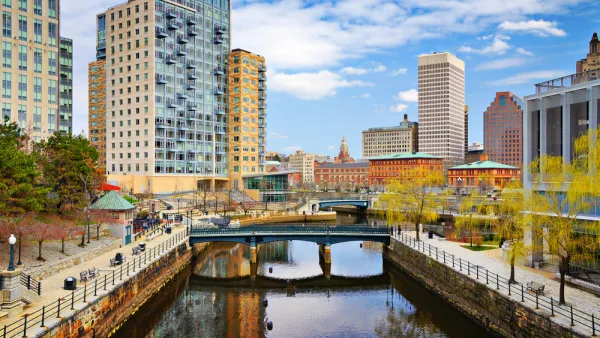How far is BART willing to go to stop people from jumping fare gates? Social media users have called new fare gates "skull crushers" and "inverted guillotines."

Lina Blanco uses the controversy arising from new BART fare gates as an opportunity to discuss hostile architecture and design in the public realm—a discussion with implications for planners as well.
"Urban planning provides tangible evidence of how a region grapples with some of its most pressing issues, whether that's budget shortfalls or a crisis of livability," according to Blanco.
If that's true the Bay Area Regional Transit system is showing a lack of patience and a tendency to violence in reaction to fare evasion, according to the public response to a proposed pilot project to redesign fare gates at a couple of system stops.
Kurt Kohlstedt, digital director and producer for the architecture and design podcast 99% Invisible, is quoted in the article describing the fare gates as a most extreme example of design. "I haven't seen anything that even comes close to the overt hostility of these inverted guillotine prototypes," said Kohlstedt.
"In a viral tweet over the weekend, BART riders expressed their concerns over a recent fare-evasion modification pilot gate spotted at Fruitvale station," writes Blanco. "Many were quick to point out how the preventative effort is a disturbing example of anti-poor, anti-homeless and ableist design. Others called the prototypes an extreme example of hostile architecture."
absolutely no one:@SFBART: pic.twitter.com/kkj4VtI0lj
— lalalina (@LinaBlanco) July 19, 2019
Blanco's tweet referred to the "inverted guillotine" version, but the "skull crusher" version also got attention on Twitter.
While BART has chosen a very particular reaction to fare evasion, many other cities and transit agencies are taking the opposite approach, decriminalizing fare evasion as a tool of discrimination that has always penalized people of color and low income people at higher rates.
Step right up, get your face smashed by BART’s new fare gates. pic.twitter.com/A70z86N5pl
— Brian McGuire (@brianrmcguire) July 2, 2019
FULL STORY: BART's Fare Evasion Crackdown Exposes the 'Deadly Elegance' of Hostile Design

Analysis: Cybertruck Fatality Rate Far Exceeds That of Ford Pinto
The Tesla Cybertruck was recalled seven times last year.

National Parks Layoffs Will Cause Communities to Lose Billions
Thousands of essential park workers were laid off this week, just before the busy spring break season.

Retro-silient?: America’s First “Eco-burb,” The Woodlands Turns 50
A master-planned community north of Houston offers lessons on green infrastructure and resilient design, but falls short of its founder’s lofty affordability and walkability goals.

Test News Post 1
This is a summary

Analysis: Cybertruck Fatality Rate Far Exceeds That of Ford Pinto
The Tesla Cybertruck was recalled seven times last year.

Test News Headline 46
Test for the image on the front page.
Urban Design for Planners 1: Software Tools
This six-course series explores essential urban design concepts using open source software and equips planners with the tools they need to participate fully in the urban design process.
Planning for Universal Design
Learn the tools for implementing Universal Design in planning regulations.
EMC Planning Group, Inc.
Planetizen
Planetizen
Mpact (formerly Rail~Volution)
Great Falls Development Authority, Inc.
HUDs Office of Policy Development and Research
NYU Wagner Graduate School of Public Service




























